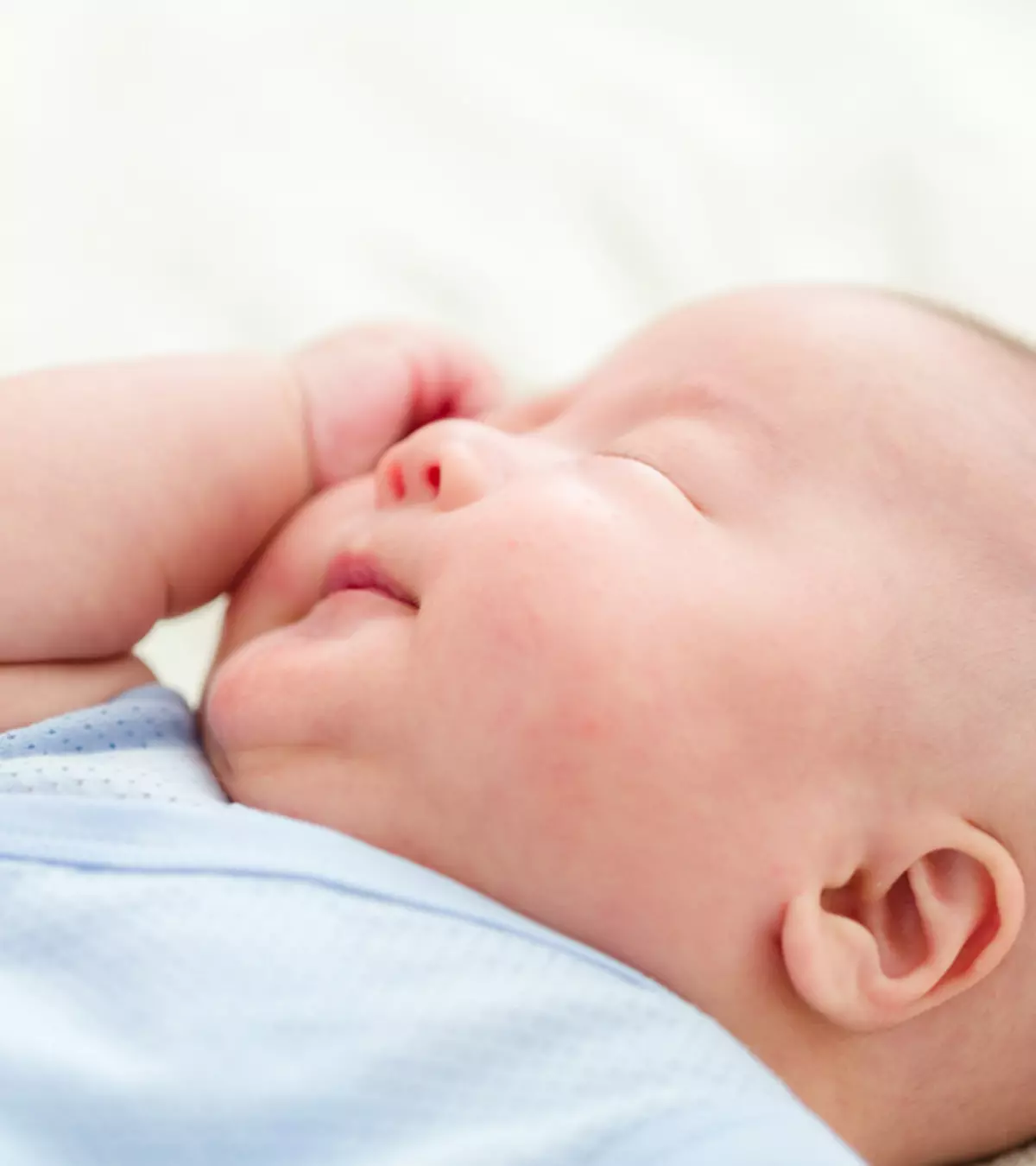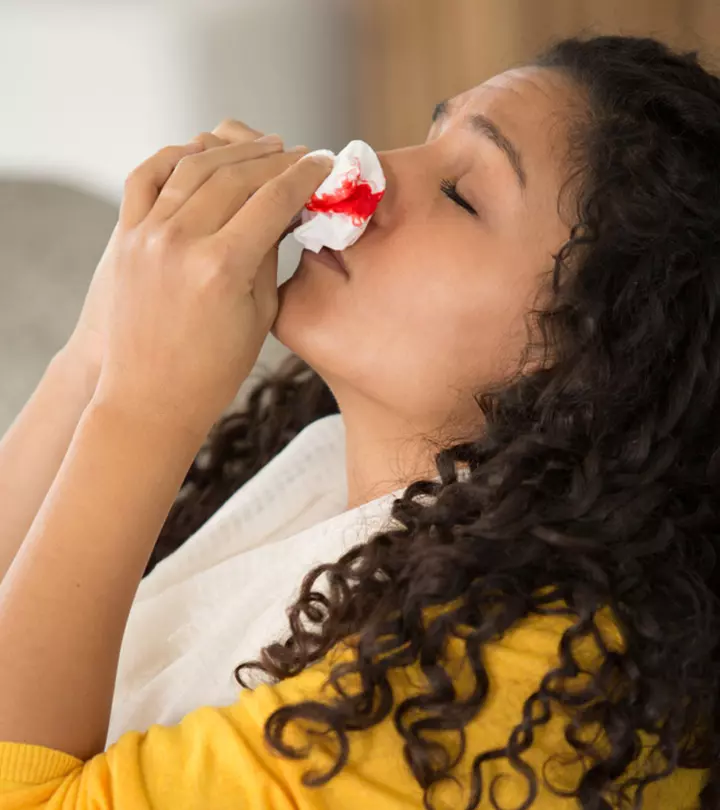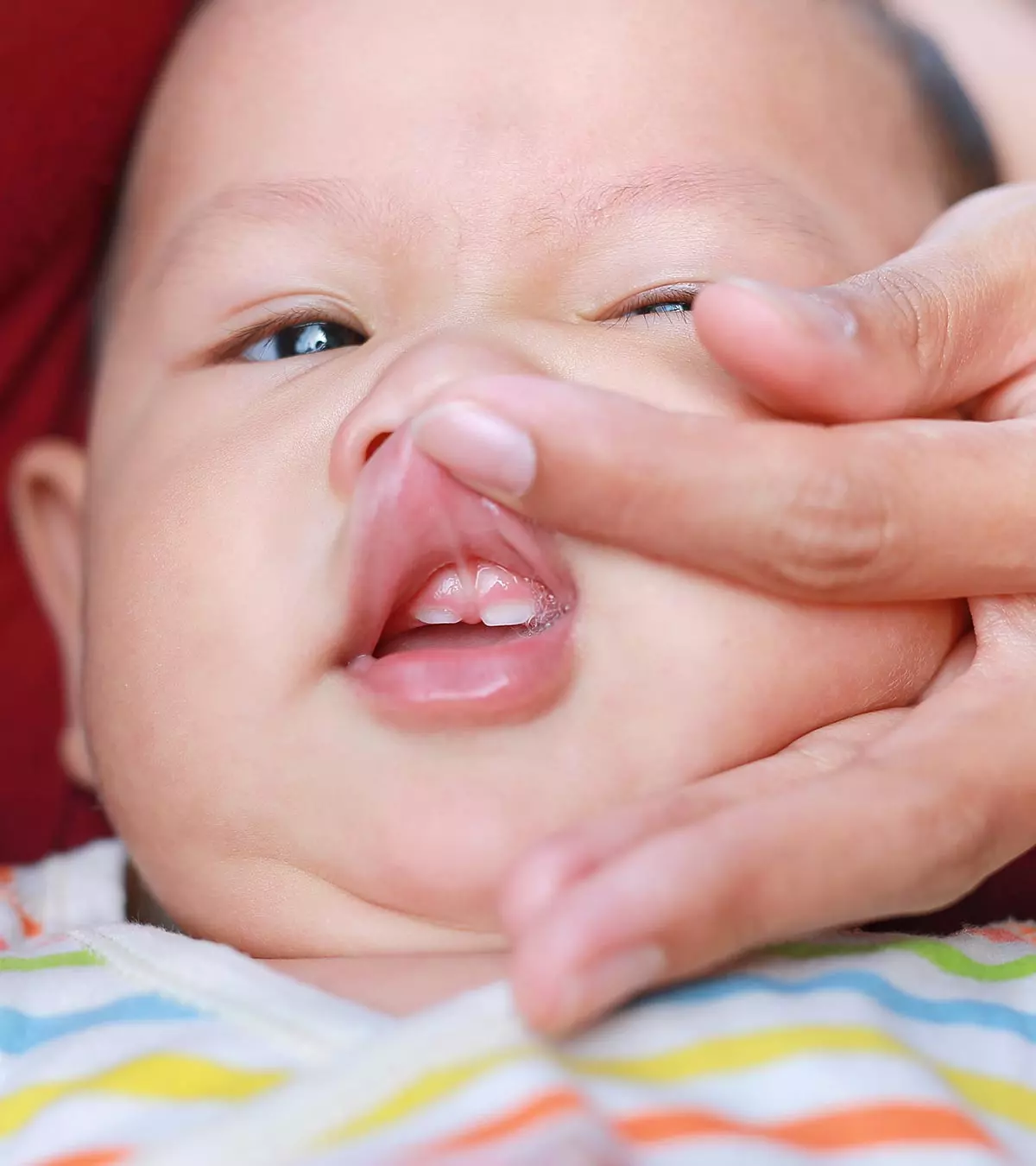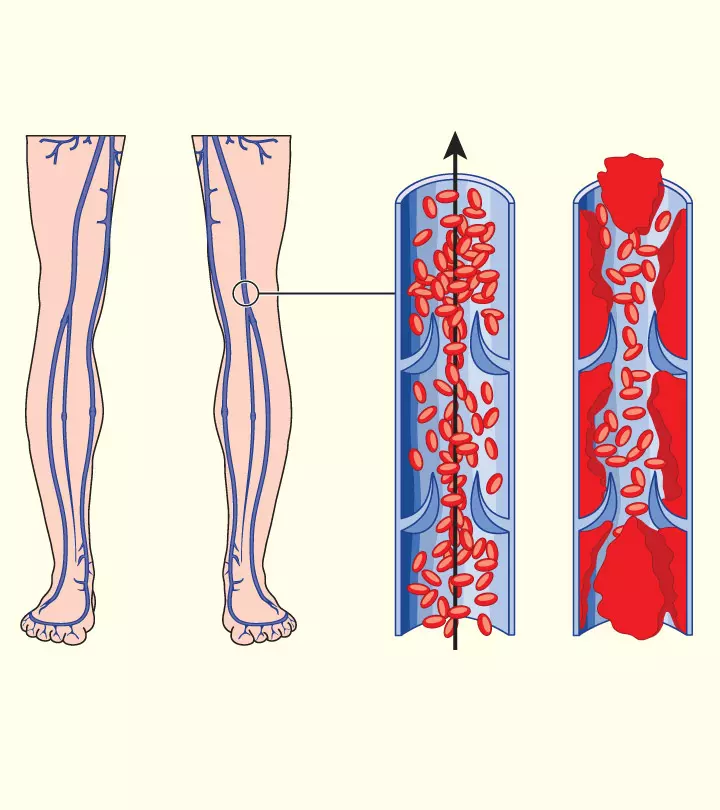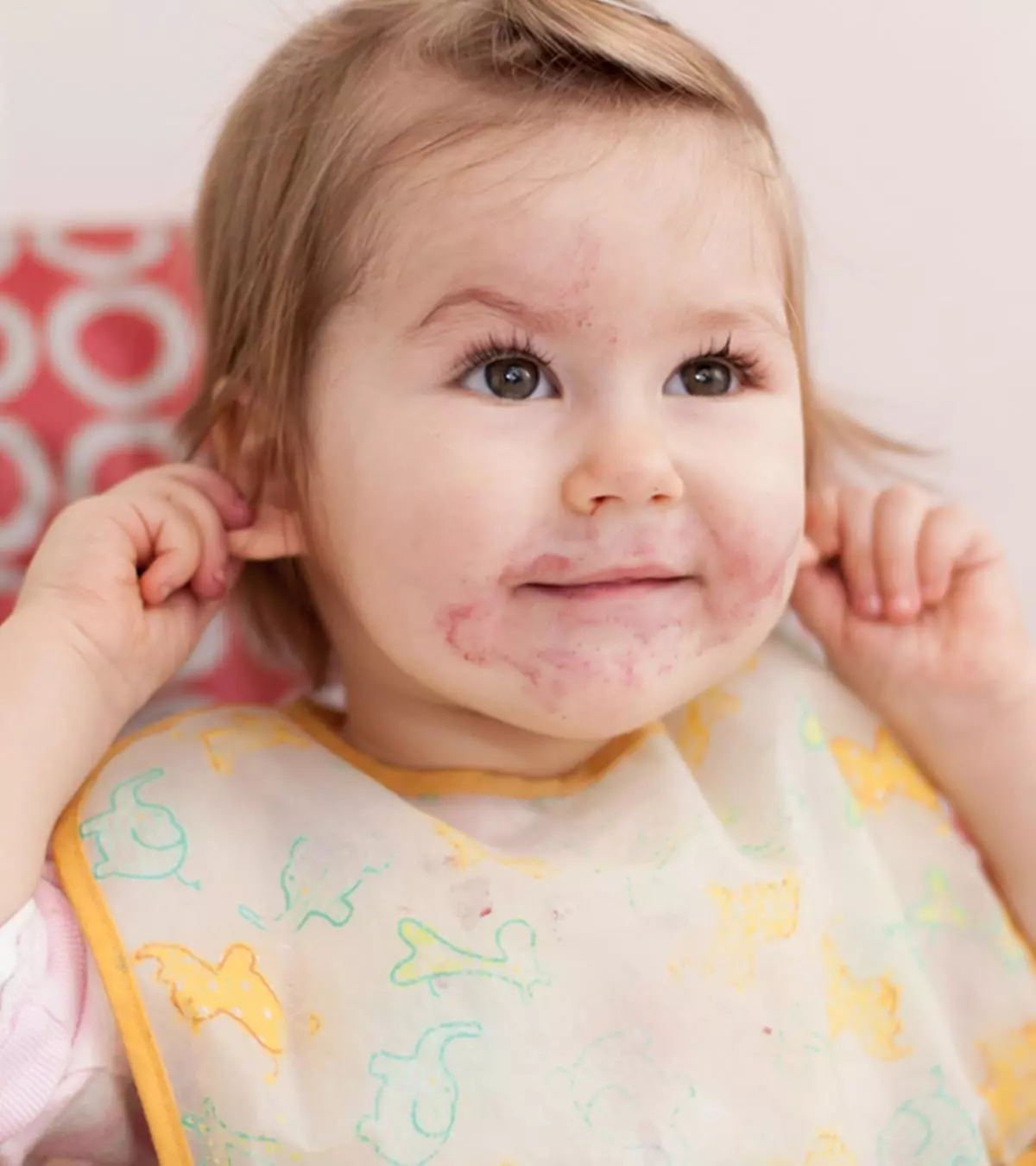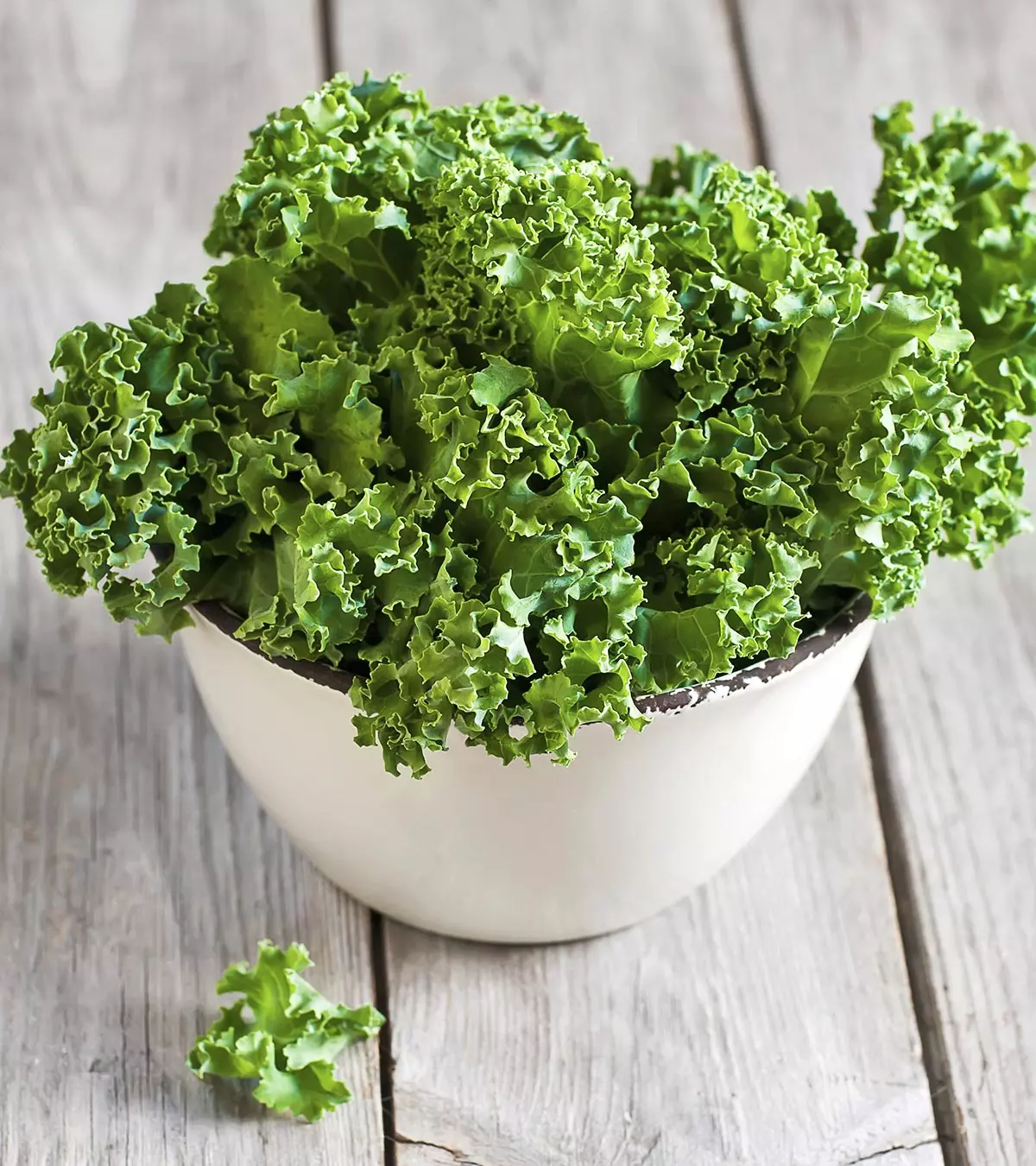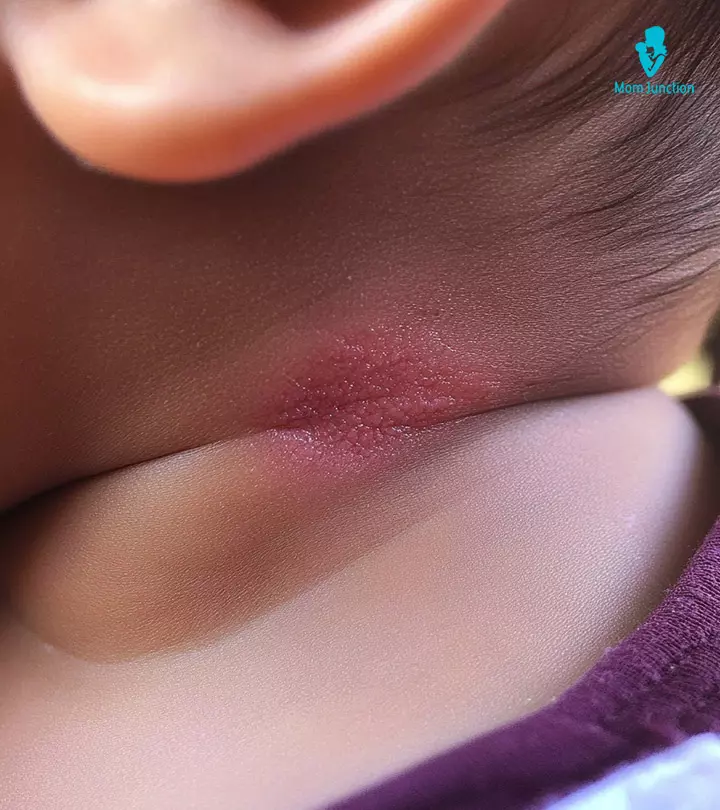
Image: Midjourney/ MomJunction Design Team
The appearance of baby neck rash is fairly common. Although it is harmless and may not be quite apparent, it requires attention due to the baby’s sensitive skin. Baby neck rash is a temporary condition that occurs because a newborn generally goes through several dermatological issues within the first few weeks after birth (1), with rashes being one of the problems. This type of rash may typically be the result of contact dermatitisiA skin reaction caused by contact with an irritating or allergy-triggering substance . Knowing about the types of rashes affecting the baby’s neck is important for the early identification of symptoms so that timely treatment and symptomatic relief will be given to the baby. In this post, we have put together all the necessary information about rashes on a baby’s neck, including their causes, symptoms, treatments, and preventive measures. Read on.
Key Pointers
- Milk drops, drooling, and friction against the skin can cause skin rashes in babies.
- Keeping the neck area clean and dry is crucial to preventing skin rashes.
- Using light and breathable fabrics, breast milk, cold compresses, and maintaining skin hygiene can help prevent irritation or rashes in babies.
- It is essential to consult a doctor when skin rashes worsen.
Causes Of Rashes On A Baby’s Neck
Neck rash in babies, a form of allergic or irritant dermatitis, looks like little bumps on the skin. These bumps may appear red, especially in babies with light skin color. This skin condition can have different causes, such as:
- Milk trickle: Babies, while feeding, either from the bottle or from the breast, tend to spit some milk out from the sides of their mouth. This trickled milk gets collected in the skin folds of the neck. If not cleaned properly, the trapped moisture creates a damp environment that becomes a breeding ground for microbial infections (2). It also works with friction and becomes another cause for rash development.
- Drool: Drooling is a common developmental feature in babies and becomes apparent at three to six months of age (3). This drool often travels all the way down from mouth to the skin folds in the neck region. When not cleaned promptly, this deposition of moisture in the skin folds can cause a skin rash due to friction and microbial infestation. Zariah Alexandria, a mother, shares how her baby developed a rash on his neck, “I guess when babies dribble a lot, they may develop a neck rash. Zach has been drooling a lot, maybe because he is teething. A lot of drool accumulates in his neck area, which may have caused the neck rash (i).”
 Expert says
Expert says
- Prickly heat: Also known as heat rash, this skin rash commonly occurs during the summer season, affecting the neck and other regions of the body. These rashes appear as tiny red itchy skin bumps. (4). The leading cause of baby heat rash is persistent sweating in infants. Besides, the extreme dry heat of summer can irritate your baby’s tender skin. Heat rash may also develop during winters if your baby has too many layers of clothing (5).
- Friction: A baby’s neck is short and tends to have folds too. These skin folds tend to be thicker when the baby is chubby and may constantly rub against each other and cause friction. Constant friction and moisture due to sweating may lead to a neck rash. This rash keeps recurring in babies till they learn to lift their heads without any support (which may take a few months). Dr. Simoni Baid, a Miami, Florida-based holistic physician, says, “Babies have healthy fat (brown fat) on their body. This causes them to have neck rolls. The neck rolls catch humidity in them, which is a breeding ground for bacteria and yeast. Therefore, it is normal for babies to get rashes under their neck.”
- Allergic reactions: A baby may develop a neck rash because of an allergic reaction to certain cloth fabrics, soaps, detergents, baby care products, or food (6). Therefore, be careful when adding new products for the baby or introducing a new food to the baby’s diet.
As the causes are different, the symptoms that accompany neck rashes in babies also differ and could be highly case-specific. Yet, there are some basic symptoms which are generic and will be noticed in most babies. Read on to know more about it.
Symptoms Of Rash On Your Baby’s Neck
The most common symptoms are itching, accompanied by pain. These symptoms may cause irritation, and the baby may lose their appetite. Although harmless, this condition becomes a matter of concern for parents. Listed next are a few remedies that might provide some relief.
 Be watchful
Be watchfulHome Remedies To Reduce Baby’s Neck Rash
California-based nurse practitioner Shawnda Dorantes advises, “Babies have delicate, sensitive skin, so neck rashes are common, especially in warm, humid conditions. Keeping the area clean, dry, and moisturized with gentle, fragrance-free products helps soothe irritation, while natural remedies like aloe vera or coconut oil provide extra hydration and protection without harsh chemicals.”
As mentioned earlier, most cases of skin rash in babies tend to disappear on their own within a few days. They may not require any treatment or the use of rash remedies. But they can make the baby highly uncomfortable during this period, due to continuous burning and itching sensations. Here are a few things you can do to alleviate the discomfort of the baby.
- Use light and breathable fabrics: Never use stiff, uncomfortable, and heavy dress material for your baby. Always look for lightweight and breathable fabric like cotton. On a hot summer day, you can dress up your baby in a diaper and cotton top. Never wash your baby’s clothes using strong bleach and detergent. These harsh chemicals may cause skin irritation and lead to rashes.
- Apply skin creams and lotions to your baby’s rash: Remember to consult your baby’s pediatrician before you use any topical creams and lotions on your baby, especially younger than six months of age to rule out the possibility of an allergic reaction. For extra caution, you can also do a patch test by applying the cream on the baby’s elbow first. Wait and check for any symptoms If there are no symptoms, use the cream on the affected area.Dr. Baid recommends, “Apply a zinc-based cream to help the skin heal faster. You may also apply Vaseline as it provides a strong barrier to the skin and prevents friction between the neck rolls. It doesn’t treat the rash, but prevents it from getting worse.”
Alexandria further adds, “The pediatrician recommended vaseline, but that was taking too long to work, and I didn’t want to wait too much. I used a diaper rash cream containing castor seed oil and organic beeswax. By the third day of application regularly, I started to see results.”
 Point to consider
Point to consider- Use breast milk: “Breast milk has IgAiA blood protein antibody that assists the immune system in combating illness and IgG iA key type of antibody in the blood, making up 75% of total serum immunoglobulins antibodies in it. So, if there is a yeast neck rash, breast milk will not help, but if it’s a bacterial or irritation rash, breast milk application may help,” Dr. Baid adds.
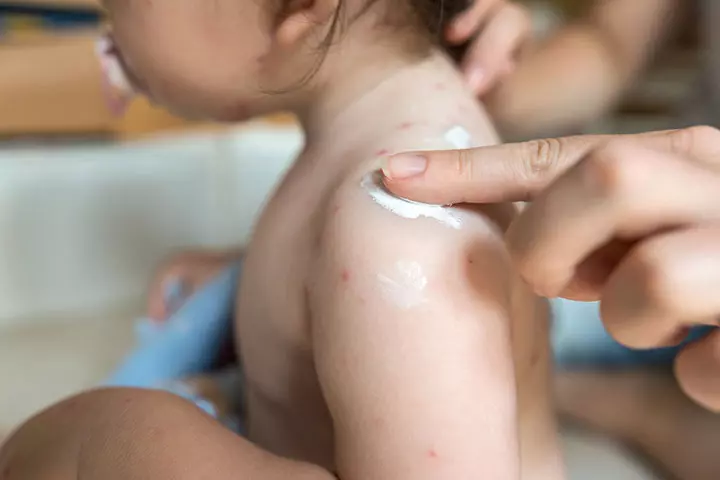
- Sprinkle cornstarch: A study published in The Journal of Pediatric Dermatology suggests that cornstarch does not enhance the growth of yeasts on human skin and protects against frictional injury (7). So, you can try sprinkling cornstarch on your baby’s neck before taking them outdoors or after a bath. It may keep the neck region dry and moist-free and reduce the risk of fungal infection-induced rash. But do consult the doctor about it first.
- Try Oatmeal: A research study published in The Journal of Clinical, Cosmetic, and Investigational Dermatology showed that colloidal oatmeal is a safe and effective ingredient in personal care products. It might be particularly effective to ease dry and itchy skin (8). A study published in the International Journal of Molecular Sciences also found that the oils in oats can help support skin repair (9). So, you can try adding oats to your baby’s bath. Also, you can try oat extract to soothe your baby’s skin.
- Use Cold compress: You can try using a cold compress on the affected region to soothe the skin inflammation. Take a tub of ice-cold water and soak a clean washcloth. Apply this to the affected region for 5-10 minutes to soothe inflamed skin. Once done, pat the area dry. You can repeat the procedure as and when needed.
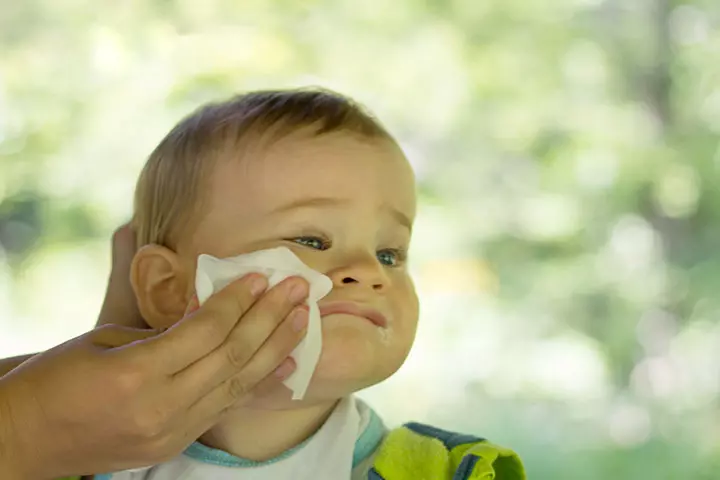
- Maintain skin hygiene: If you follow regular bathing and good hygiene practice for your baby, you may be able to prevent these skin rashes.
- Use boiled or distilled water: Remember to use boiled or distilled water to bathe your baby. This will ensure that the bathing water doesn’t contain any harmful microbes that may otherwise harm.
- Massage with coconut oil: You can also try massaging your baby with coconut oil twice a day for relief from symptoms. Due to its emollient and anti-microbial properties, coconut oil may work as a preventive baby skincare product (10). A research revealed that coconut oil helped lessen dermatitis severity and aid in wound healing (9).
When To Call Your Baby’s Doctor?
Your baby’s neck rash may disappear on its own. However, if there is an underlying health condition associated with rash, then you may also notice the following symptoms (11):
- Fever
- Areas that look wet, oozing, or red
- A rash that is worse in the skin creases
- Pus-filled or fluid-filled blisters
- significant scratching
- inconsolable crying

Also, if you notice small red dots or spots that don’t disappear when pressed, you must consult the doctor immediately. These spots may occur due to bleeding under the skin. This condition is known as petechiae and can indicate a serious infection.
Remember that you know your baby better than others. If you notice any skin rash that worries you, don’t hesitate to call a pediatrician for further consultation. Depending on the cause and other symptoms, the pediatrician may recommend topical steroids or other medications for your baby’s condition.
Preventive Measures To Avoid Baby Neck Rash From Occurring

- Bathe your baby regularly and maintain a good baby hygiene practice.
- Choose fragrance-free, hypoallergenic baby products free of harsh chemicals.
- Select the right fabrics for your baby. Avoid rough fabrics, woolen clothes, and blankets. These are not recommended for babies as they have a sensitive skin type.
- Remember to dry the neck region (and other moisture-prone regions) after bathing your baby, and after every feed.
- Keep your baby’s neck region open and moist-free most of the time. Dry skin prevents the accumulation of moisture in the skin folds. It helps in healing the rashes faster.
- Try to keep your baby in a cool and well-aired room as excessive heat causes perspiration in the skin folds and leads to skin rashes.
- During winters, when woolens cannot be avoided, use the ones that have a wide neck. Make the baby wear a cotton shirt collar underneath the woolens so that wool does not touch the skin.
 Quick tip
Quick tipFrequently Asked Questions
1. How to get rid of a rash on a baby’s neck caused due to saliva?
You can treat drool rash at home. First, wash your baby’s neck with warm water twice every day and pat their neck dry using a soft cloth. Once your baby’s skin is dry, you may apply an ointment to help soothe the irritation. The ointment will also block the baby’s drool and skin and help the rash heal quickly (12).
2. Can I use Sudocrem on a baby’s neck?
Yes. Sudocrem is a time-tested cream clinically proven rash treatment that can be used to heal rashes on your baby’s sensitive skin (13).
3. Is there anything I should avoid putting on my baby’s neck rash?
It is advised to avoid putting creams and ointments on a baby’s neck rash as they might block the pores of the skin and make the skin warmer (14).
Baby neck rash is common due to the accumulation of drool or milk between the neck folds. Although it is a harmless condition, it can be concerning to parents. If your baby has developed a neck rash, you may try to put them in comfortable clothing or use dermatologically tested baby lotions to treat the redness. The rashes will subside after following a good baby skincare regime. Keep the neck clean and try a few home remedies after a doctor’s approval to reduce the rashes. However, rashes in babies can develop anywhere on their body. If you find the rashes concerning or if your baby develops any other symptoms, it is better to consult a pediatrician.
Infographic: How To Manage Baby Neck Rash At Home
Baby neck skin is particularly prone to rashes because of the frequent exposure to saliva and drool. Although these neck rashes can cause discomfort to the baby, they are typically not severe and can be managed at home. So, check out the infographic below for some practical home remedies for your baby’s neck rashes. Illustration: Momjunction Design Team
Illustration: Baby Neck Rash: Causes Symptoms And Home Remedies

Image: Dall·E/MomJunction Design Team
Are you wondering when to expect your first period after breastfeeding? Watch this informative video to understand when you should expect your first period while breastfeeding and how to manage it.
Personal Experience: Source
MomJunction articles include first-hand experiences to provide you with better insights through real-life narratives. Here are the sources of personal accounts referenced in this article.
i. How to clear baby’s neck rash fast! | clearing neck rash at home naturally | diy neck rash hack 2023;https://www.youtube.com/watch?v=tBt8sF7xdnk
References
1. Zekayi Kutlubay et al.; Newborn Skin: Common Skin Problems; National Center For Biotechnology Information (2017)
2. Rash under the chin and in other skin folds in babies; CYA, South Africa
3. Drooling and Your Baby; Healthy Children; American Academy Of Pediatrics (2016)
4. Heat Rash; Healthy Children; American Academy Of Pediatrics (2013)
5. Canadian Paediatric Society; Skin care for your baby; National Center For Biotechnology Information (2007)
6. Contact dermatitis; MedlinePlus
7. Leyden JJ.; Corn starch, Candida albicans, and diaper rash.; National Center For Biotechnology Information (1984)
8. Maryline Criquet et al.; Safety and efficacy of personal care products containing colloidal oatmeal; National Center For Biotechnology Information (2012)
9. Lin, Kai, et al.; Anti-Inflammatory and Skin Barrier Repair Effects of Topical Application of Some Plant Oils.International Journal of Molecular Sciences (2017)
10. Verallo-Rowell VM et al.; Novel antibacterial and emollient effects of coconut and virgin olive oils in adult atopic dermatitis.; National Center For Biotechnology Information (2008)
11. Rash – child under 2 years; Medical Encyclopedia; Medline Plus; National Institute of Health; U.S National Library of Medicine
12. Baby’s Drool Rash: How to Treat and Prevent It; Scripps Health
13. Antiseptic Healing Cream; Sudocrem
14. Rash – child under 2 years; Mount Sinai
15. Rashes in babies and children; NHS
Community Experiences
Join the conversation and become a part of our nurturing community! Share your stories, experiences, and insights to connect with fellow parents.
Read full bio of Dr. Arun Wadhwa

Shawnda Dorantes is a family nurse practitioner with over 11 years of experience in acute care and the founder of Beauty Lounge Medical Spa. Established in 2018, Beauty Lounge is a full-service aesthetic center in San Diego, California. Shawnda triple-majored in Biological Sciences, Women’s Studies, and Nursing from Cal State University San Marcos in 2010 and holds Allergan Master Injector certification. She earned her Master of Science in Nursing in 2021 to become a certified Family Nurse Practitioner (FNP).
Shawnda Dorantes is a family nurse practitioner with over 11 years of experience in acute care and the founder of Beauty Lounge Medical Spa. Established in 2018, Beauty Lounge is a full-service aesthetic center in San Diego, California. Shawnda triple-majored in Biological Sciences, Women’s Studies, and Nursing from Cal State University San Marcos in 2010 and holds Allergan Master Injector certification. She earned her Master of Science in Nursing in 2021 to become a certified Family Nurse Practitioner (FNP).
- Dr. Simoni Baid is a Miami-raised Indian-American Vegan Physician, with seven years of experience as a medical doctor. She did her MD from Ross University School of Medicine and worked at The MetroHealth System, Cleveland.
 Dr. Simoni Baid is a Miami-raised Indian-American Vegan Physician, with seven years of experience as a medical doctor. She did her MD from Ross University School of Medicine and worked at The MetroHealth System, Cleveland.
Dr. Simoni Baid is a Miami-raised Indian-American Vegan Physician, with seven years of experience as a medical doctor. She did her MD from Ross University School of Medicine and worked at The MetroHealth System, Cleveland.
Read full bio of Swati Patwal
Read full bio of Rohit Garoo
Read full bio of Vidya Tadapatri










